Chris Loehmer Kincaid's Blog
November 15, 2025
Life is crazy, isn't it?
Isure wish I could promise you this would be my final post about my daughter,Val, but I’m not always so good at keeping promises. But just like me, you’regonna have to take it one blog at a time, one day at a time.
 OnMonday, August 25, we all met down at the funeral home to make arrangements. Weall agreed we wanted to keep things simple, short, and quick. But fitting. Idon’t know. People said we did a beautiful job presenting a fitting tribute toVal. But, again, I don’t know. It was Val, her life, not any of us.
OnMonday, August 25, we all met down at the funeral home to make arrangements. Weall agreed we wanted to keep things simple, short, and quick. But fitting. Idon’t know. People said we did a beautiful job presenting a fitting tribute toVal. But, again, I don’t know. It was Val, her life, not any of us.Butanyway, sitting in the funeral home office, we had to decide what to put in thelittle card they always have for people to take. The thing that Hubby has tobring home from every visitation or funeral we go to, and it sits on thekitchen counter, bugging me for weeks before I finally throw it away.
Thefuneral home lady (Karri, an absolute sweetheart, by the way) offeredsuggestions from the standard funeral card book. Not a one was even close toVal.
Herboyfriend suggested we use the words from the Tom Petty song from the tattoo onher back. We knew it was something about wildflowers and could all picture it,but none of us could pull the words out of our brains.
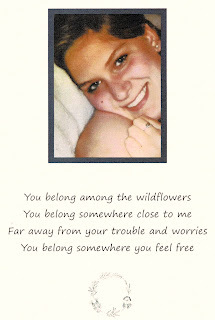
Wefinished our business, and I told Karri we’d figure out the lyrics and get backto her.
Thatnight, when I couldn’t sleep (as if I thought I would ever sleep again withouttaking any drugs), I went on my laptop and started looking up the lyrics forall of the Tom Petty songs.
Duh!The song is literally named “Wildflowers.”
Thisweek, I was working on cleaning up my computer by deleting some of thethousands of pictures I’ve stored from all my travels. In 2017, Val and I wenton one of our many trips to Kenya, and one day she got sunburned while wearinga shirt with straps in a pattern across her back. And there were those words,blowing along her back with flower petals.
Didshe ever think those words would mean so much one day?Life.It’s crazy, isn’t it? We’ll never be able to understand it. All we can do iskeep muddling along, praising God that He has it under control.

November 13, 2025
Big Church and Church of Bones near Kutná Hora - Czech Blog post #16
The journal of my trip tothe Czech Republic is winding down.
Our last day there, werode an hour to the historic town of , knownas a center for medieval silver mining and as an UNESCO World Heritage Site.
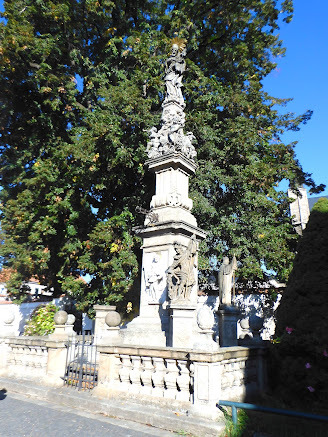
Our first stop was in thevillage of Sedlec just outside of Kutná Hora. Also known as the Bone Church,the Sedlec Ossuary is filled with over 40,000 human bones, all arranged into macabre decorations such as chandeliers, garlands, and even a coat of arms. Unfortunately,no photography was allowed inside, but you can Google pictures of it.
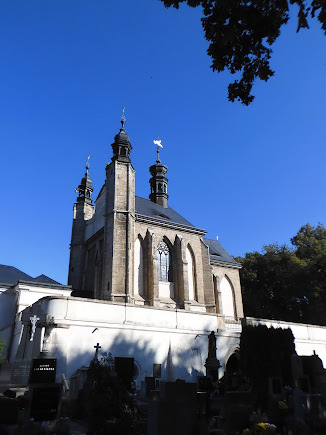
The story goes that, in1278, an abbot from Sedlec brought back dirt from Golgotha in the Holy Land andspread it over the local cemetery. When people found that out, they all wantedtheir loved ones to be buried there.
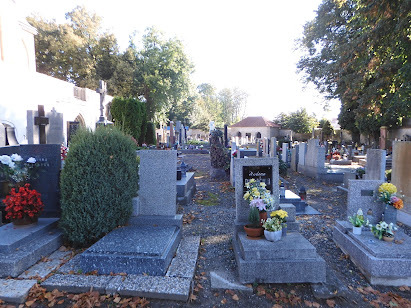
The cemetery started togrow because of that, but things got out of hand when Europe was hit by variouswars and plagues over the next two centuries. Finally, they built the church, whichhad an upper and lower level. Because the lower level was below ground, the skeletonsfrom the cemetery could be “buried” there.
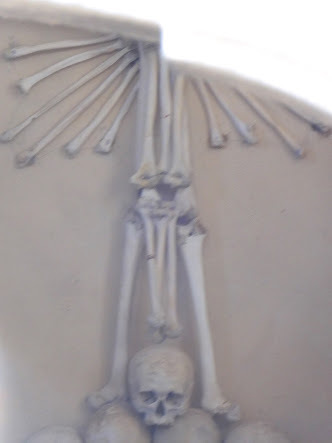
In 1870, František Rint, awoodcarver, was hired to put the heaps of bones in order. Apparently, he letout his creative side when he turned every bone in the human body into artwork.
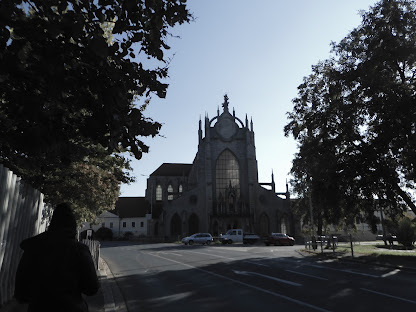
A short walk down the streetis the Cathedral of Assumption of our Lady and St John the Baptist.

This Baroque Gothic churchis also an UNESCO World Heritage site, but since I already said so much aboutthe Bone Church and I was able to take pictures in this other, bigger church, Iwon’t bore you with facts. I’ll just show you pictures.
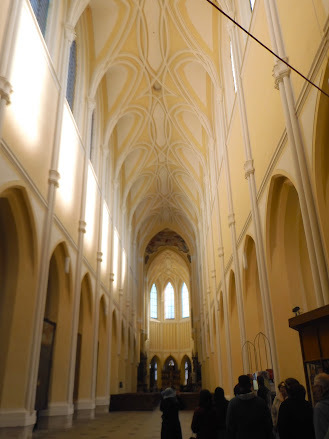
It was pretty impressive, and I do wish I remember what all these things were, or had the energy to find out.


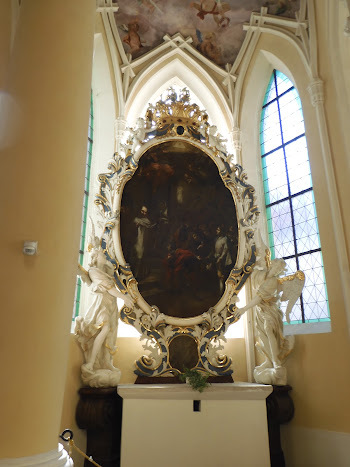

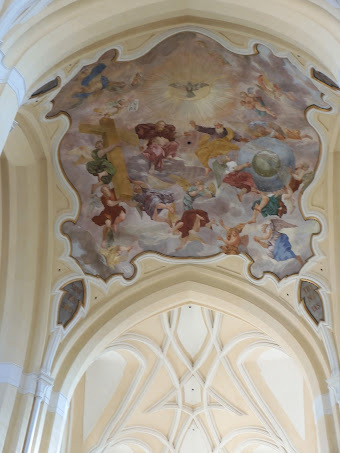
November 12, 2025
Misc, Dresden part III - Czech Blog post #15
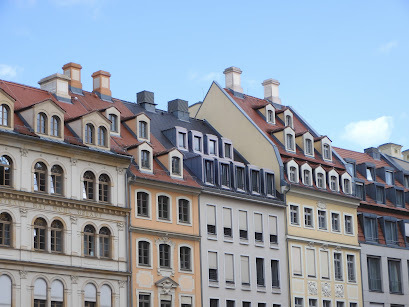
Well, I’ve already toldyou enough of the history of Dresden, Germany, to fill two blogs. We saw somuch more and I would love to tell you even more. But I will rein myself in at this pointand just share lots of randomness from the rest of the city.

Some places I can label; about others I am relatively clueless. Ok, I’m usually clueless, but such is my life.
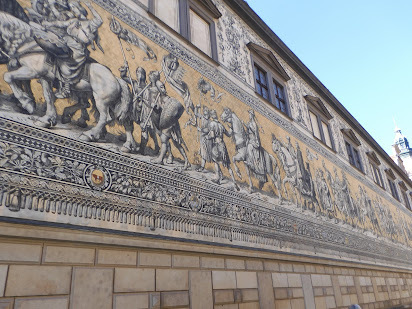
Known as the TheFürstenzug, or Procession of Princes in English, this long mural made ofporcelain tiles shows Saxon rulers throughout the ages.

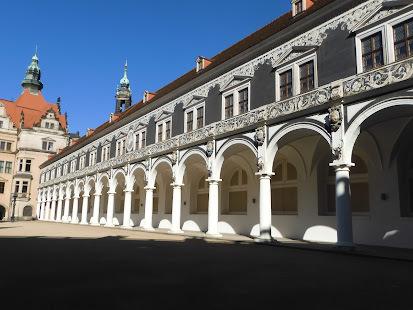
Stallhof or Stall Courtyard is where the stables were for theDresden palace and was built in 1586. Jousting tournaments and other competitionson horseback were held there.

The Opera House, called TheSemperoper, after its architect, Gottfried Semper. The statue is of Johann King of Saxony.

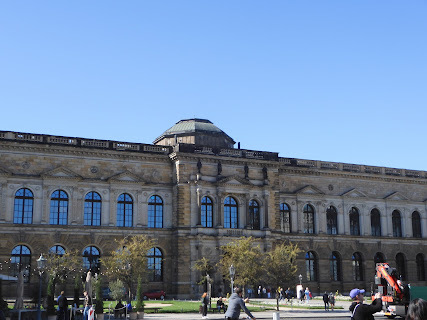
The Baroque Zwinger Palace.The term "Zwinger" was the name used in the Middle Ages for part of afortress between the outer and inner walls. Interestingly, the exact on-linetranslation for zwinger is “kennel”.
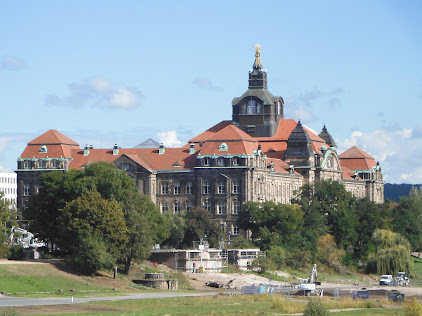
Because this building wason the other side of the Elbe River, we didn’t get close to it. My onlinesearch leads me to believe it is some government administration building.
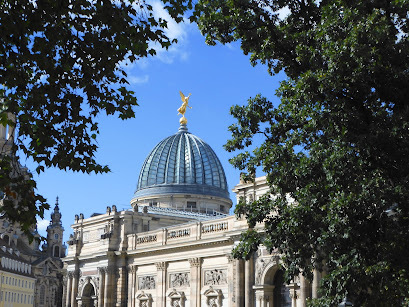
The pictures above andbelow are part of the Academy of Fine Arts. Once again, I found way too muchinformation on the internet, so I’m leaving it at that, except to add the word:Zitronenpresse.


Cathedral of the HolyTrinity and one of the many statues along its sides.
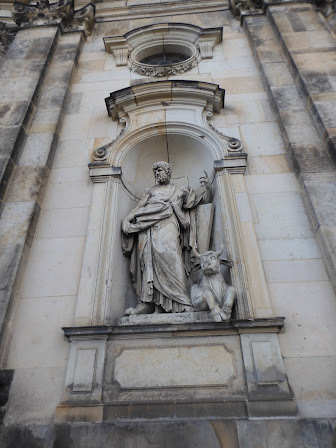
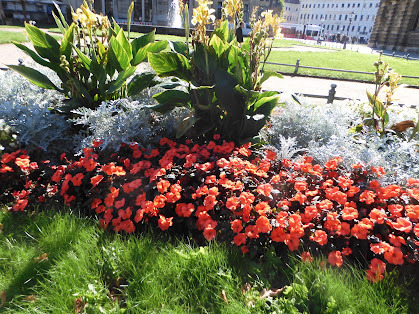
Flowers and sometimes youdon’t even need a translation.

November 9, 2025
Doors - Czech trip, post #14
 “Workhard to enter the narrow door to God’s Kingdom, for many will try to enter butwill fail.” (Luke 13:24, New Living Translation)
“Workhard to enter the narrow door to God’s Kingdom, for many will try to enter butwill fail.” (Luke 13:24, New Living Translation)
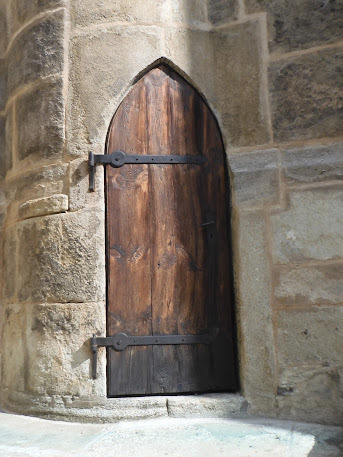
Thesecond day of our trip to the Czech Republic, I became fascinated with all thedoors. In every city we visited, I found more than a couple of doors which werebeautiful. Doors which told a story; wooden doors with intricate carvings; huge,heavy doors; and even a few narrow ones.
 Butat most of them, I had doubts if anyone would answer my knock, much less let mein. Luckily, God will answer when I’m knocking on heaven’s door.
Butat most of them, I had doubts if anyone would answer my knock, much less let mein. Luckily, God will answer when I’m knocking on heaven’s door.
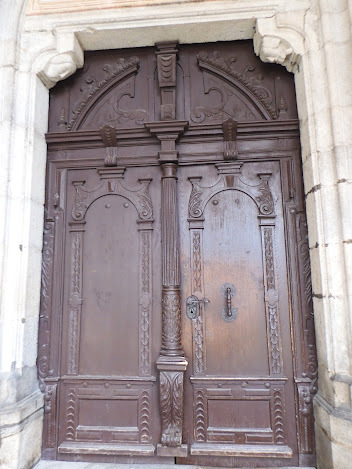
“Askand it will be given to you; seek and you will find; knock and the door will beopened to you. For everyone who asks receives; the one who seeks finds; and tothe one who knocks, the door will be opened.” (Matthew 7:7-8, New InternationalVersion)
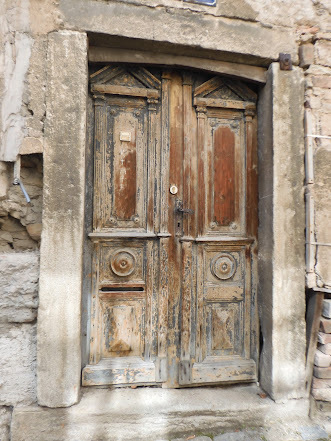
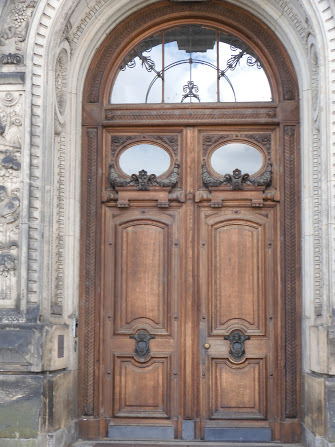



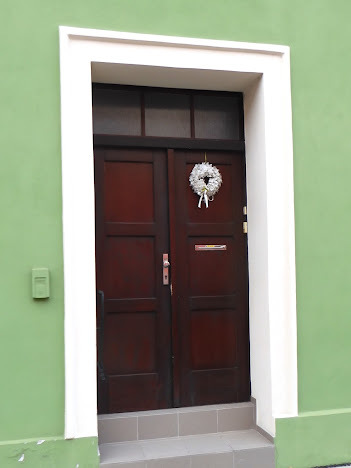
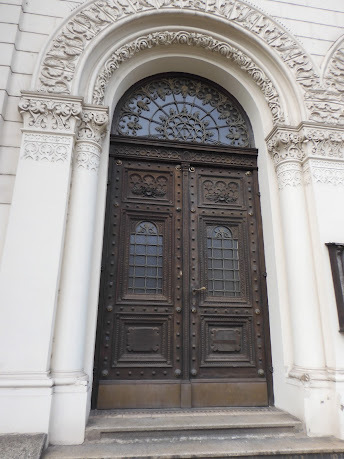
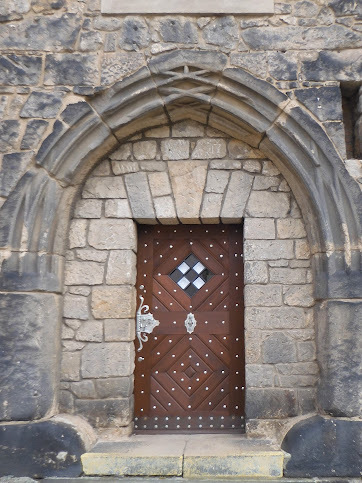
 These are only half of the ones I took pictures of!And there were many more I didn't capture on my camera at all.
These are only half of the ones I took pictures of!And there were many more I didn't capture on my camera at all.
November 7, 2025
Rebirth in a German City, part II - Czech Blog post #13
Today’s massive amount ofinformation surrounds the Frauenkirche, or Church of Our Lady in Dresden.
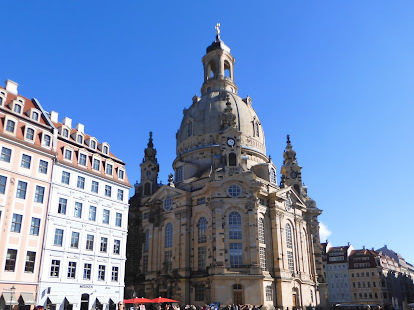
The original Baroque Lutheranchurch was built between 1726 and 1743.
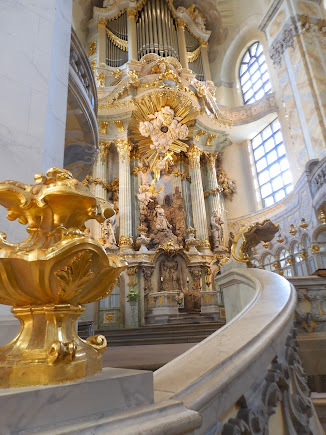
The church had a distinctivehigh dome, measuring 220 feet high, and was called the "Stone Bell". Whenit was being built, no one thought the building would hold up the weight of the12,000 ton dome. Despite those doubts, the dome proved to be extremely stable. In1760, the dome was hit by over one hundred cannonballs fired during the SevenYears' War and held strong.

Sadly, the building was nomatch for two days and nights of bombing by the Allied Forces in February of1945.
At first it seemed as ifthe church had a will of its own, or God’s arms were supporting it, because it stoodlong enough for three hundred people who had sheltered there to escape.

From the extreme heat fromfires inside, the dome finally collapsed at 10 a.m. on 15 February. The walls shattered and nearly 6,000 tons ofstone plunged to earth.
Somehow, the altar wasonly partially damaged during the bombing raid and fire.
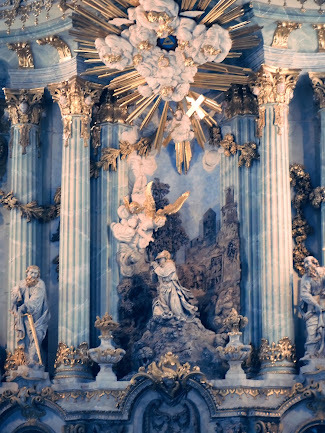
The blackened stones wouldremain in a pile in the city center for 45 years as Communists took over theentire region, which had become the country of East Germany, under the Russians.
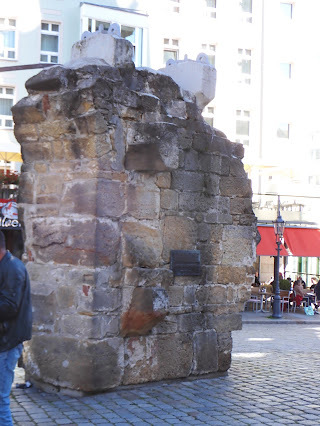
During that time, residentswould salvage stone fragments from the church, numbering them for future use inreconstruction. It would be many years before the rebuilding could begin.
By 1989, tens of thousandsof East German citizens were protesting against the Communists rule. Finally onNovember 9, the Berlin Wall came down, and the way was paved for Germany to bereunited.
Very soon after that, theresidents of Dresden began meeting to find a way to rebuild their belovedchurch. It would take thousands of dedicated people years to realize theirdream.
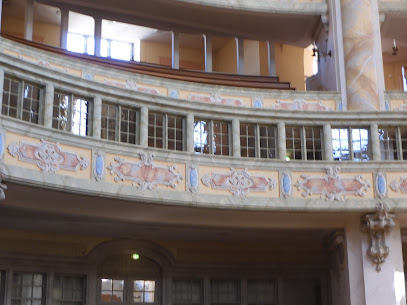
But this is how I know I haveGerman roots – when we are dedicated to something, we will dig in our heels andget it done.
And so, the people of Dresdenraised the support they needed. And not only financially.
Hundreds of architects,art historians, and engineers were recruited to sort through the massive pilesof stones and determine which ones were safe to reuse. Computer technologyhelped to figure out where each stone belonged. On the new church, you can easily pick out the old stones by their dark color.
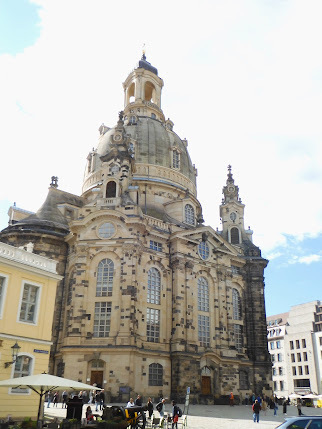
Using original plans from the1720s, reconstruction finally began in February 1992.
The goal was to finish theambitious project by 2006, in celebration of the 800-year anniversary of thecity of Dresden. It was completed a year early in 2005.
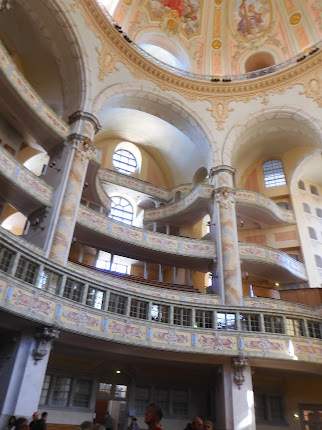
The new golden tower crosswas donated by the British people and the House of Windsor. Made by a Britishsilversmith company, one of the main craftsmen on the project was the son of oneof the bomber pilots who destroyed the church in 1945.
The cross that once toppedthe dome, now twisted and charred, is displayed to the right of the new altar.
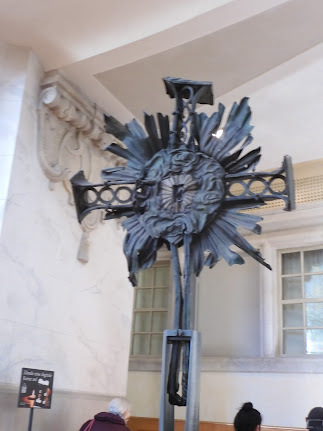
A bronze statue ofreformer and theologian Martin Luther survived the bombings and now stands infront of the church.
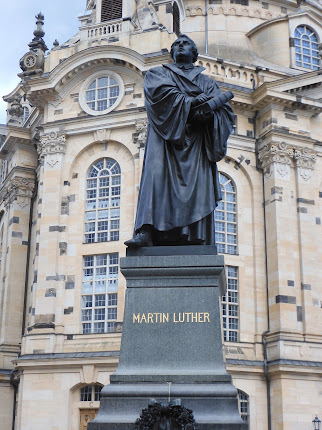
After we toured the mainchurch and were going to leave, a small sign by a staircase caught my eye. Iwhispered to my friend, “let’s go down there”. Turns out the basement of Frauenkirchehas a large display of documents and artifacts from the church's destruction inWWII. In a catacomb-like setting, each room told a story of faith and resilience.I was respectful of the signs asking to not take pictures, but it was such amoving place to visit. You can look up pictures of it yourself on line.
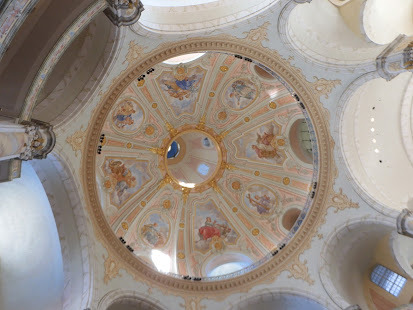 (All these pictures were, of course, taken in September 2025 when I there and don't all reflect what I was writing about by each one. I can't do it all.)
(All these pictures were, of course, taken in September 2025 when I there and don't all reflect what I was writing about by each one. I can't do it all.)November 5, 2025
A German City, part I - Czech Blog post #12
Monday, September 29, wasour second-to-last day in the Czech Republic. That morning, we headed out ofthe country to the German city of Dresden. You may know that my dad was born inGermany way back in 1915 – yikes, that was 110 years ago! Anyway, I've alwayswanted to go there. When we were trying to decide what trip to take this fall,Germany was on the short list, but for whatever reason, the trip to the CzechRepublic sounded more interesting. Don't worry, Germany is still on the list,and I'm keeping my fingers crossed for next spring.
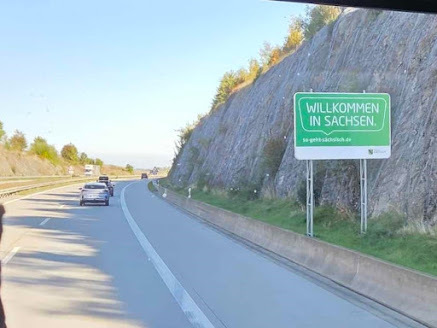
Okay, so much to see inDresden, I'd better get going.

Dresden has been called"Florence on the Elbe", because of its beautiful Baroque and Rococoarchitecture and culture, which reminded many of Florence, Italy. The ElbeRiver, one of Central Europe's major rivers, winds its way through Dresden.
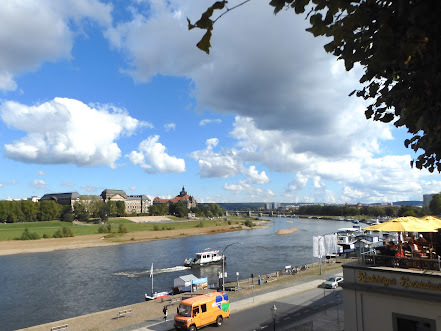
Dresden was firstestablished in the early 13th century and soon became an important tradecenter. Of course, way back then, it wasn't Germany. In the early years, muchof Europe vacillated between different dynasties and kingdoms, including beingrun by the Holy Roman Empire and the whole Middle Ages thing. Even though Iread about it on Wikipedia, much of the history is lost on me.
So, let's start with whatmost of us remember about German history. World War II.
By 1945, Hitler and hisNazi regime were losing a lot of ground. They weren't, however, ready to giveup altogether.
Because Dresden had been amajor communications and manufacturing center, the Allied forces believed therewere munitions factories within the city. Beginning on the night of February13, 1945, the British and United States Air Forces dropped thousands of tons ofbombs on the city center. By the time they were done, two days later, they hadflattened the historic center of the town, and nearly 25,000 people, mostlywomen and children, had been killed.

Coincidentally, I'mreading the book, "Where The Birds Never Sing: The True Story of the 92ndSignal Battalion and the Liberation of Dachau", and I just read the partwhere the men reach Dresden. After being in the war for nearly a year, they werestill shocked by the destruction.
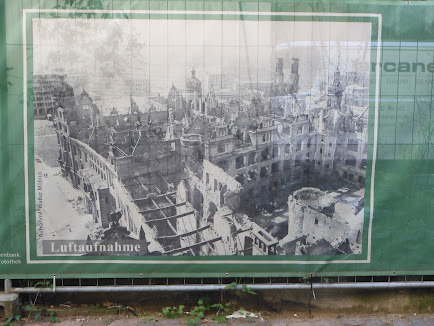
The truly amazing thing isthat near the start of the war, officials in Dresden packed up as much artworkas they could, along with detailed plans of the historic buildings, and hidthose artifacts in the mountains. They never imagined their city would bedestroyed; they were worried about looters coming through at some point in thewar.
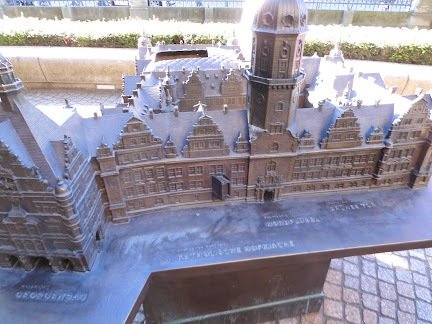
Okay, that's way too muchhistory.
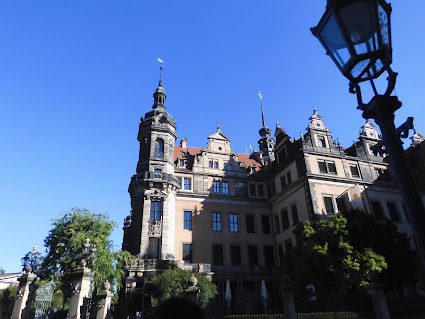
Our first stop, as welistened to all of that history, was the Residenzschloss or Dresden RoyalPalace.
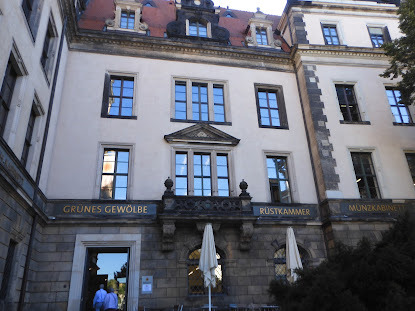
Construction of the formerresidence of the Electors and Kings of Saxony began in 1548 and wasn'tcompleted until 1901.

It was destroyed in 1945,along with the rest of the buildings in the area. Reconstruction didn't beginuntil 1986 and has not yet been completed.
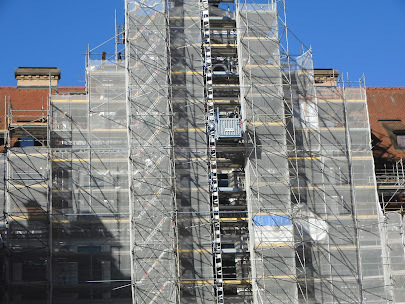
Recreating the plasterworkon the large inner courtyard is a painstaking, slow process.
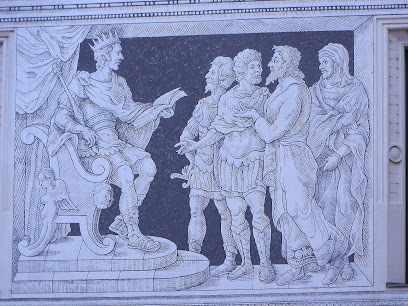
The technique is calledSgraffito, a term meaning to scratch. When you were a kid, did you ever color apiece of paper with all the colors of the rainbow, then color over that withblack crayon? Then you'd scrape off the black with a knife to make a designthat showed all the colors. Know what I'm talking about? That's kind of whatthis was like, only on a much grander and more refined scale.

There are multiple museumsthroughout the castle complex, but we had a lot more of the city to see in ourfew hours there. More about that – and less history (maybe) – on Friday.
November 1, 2025
She maybe wasn't a saint, but she's my saint just the same.

Butbecause of his great love for us, God, who is rich in mercy, made us alive withChrist even when we were dead in transgressions—it is by grace you have beensaved. And God raised us up with Christ and seated us with him in the heavenlyrealms in Christ Jesus, in order that in the coming ages he might show theincomparable riches of his grace, expressed in his kindness to us in ChristJesus. For it is by grace you have been saved, through faith—and this is notfrom yourselves, it is the gift of God — not by works, so that no one canboast. For we are God’s handiwork, created in Christ Jesus to do good works,which God prepared in advance for us to do. (Ephesians 2:4-10, NewInternational Version)
I was ready to write about doors today – the narrow door which Jesus said onlythe faithful would enter and pictures of all the doors we saw in the CzechRepublic. Until it dawned on me that this is All Saints Weekend in the Church.
At our church, the pastor reads the names of the parishioners who have leftthis world over the past year and the dates when they woke up as saints in heaven with Jesus, asthe bell gongs for each of them. There are always a few people listed whom Iknew personally, and I always get teary-eyed.
I haven’t brought it up lately, but I’m sure you remember that my darlingdaughter died in August, ten weeks ago, the day before yesterday. The bellwon’t chime at our church this weekend in her name, because she was no longer amember. But according to our pastor and according to God, when He clearly toldme where Val is, she is in heaven in the arms of Jesus.
I know many people she knew won’t believe that; they didn’t know Jesus as theirSavior. And I know some people who knew the kind of life Val had been livingwon’t believe she could possibly be forgiven and saved. And I know that somewill even think to themselves, “Poor Chris, she’s just a mother grasping inhope that she’ll see her baby girl again someday.”
But I know what I know. It’s more than faith and hope; it is what I KNOWbecause I have faith and hope. I pray that whatever you might be suffering from,you have that kind of faith and hope, too.

Youbelong among the wildflowers
Youbelong somewhere close to me
Faraway from your trouble and worries
Youbelong somewhere you feel free
(from“Wildflowers” by Tom Petty, 1994)
(wordsfrom the tattoo on her shoulder)
October 30, 2025
Looking Down – Czech Blog Pots #11
I was going to starttelling you about Dresden today, but then Hubby and I watched a movie lastnight, so I just didn’t get time to do a proper write-up on that German city.As it is, I think I’ll have to dedicate two entire posts to the beautiful, historiccity.
So, instead, since it’sHalloween and I should do something different anyway, I want to remind you tolook down – you never know what you’ll find. What I found were unique manholecovers!
The first three were allaround Prague.
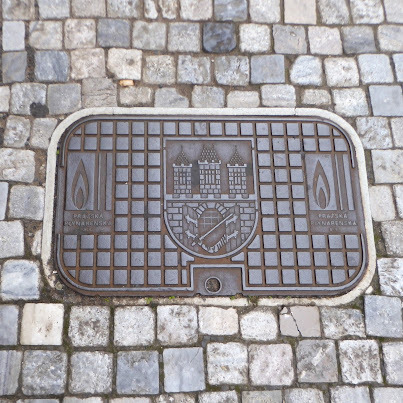
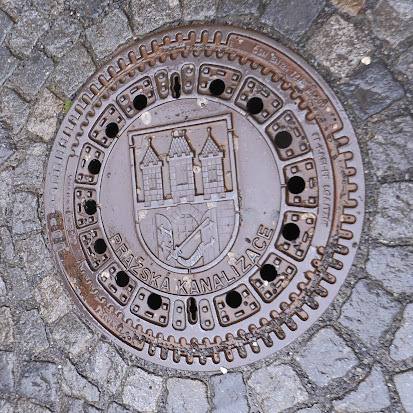
(This one might not really be a manhole cover, but more of a medallion of some kind in the street.)
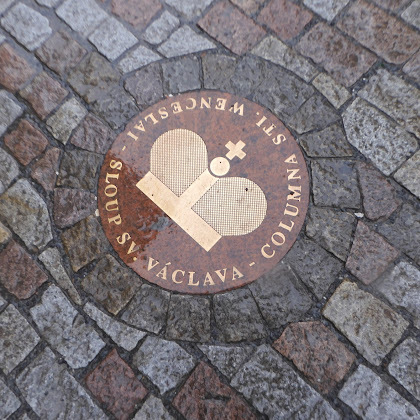
This one in Český Krumlov.

One in Pilsen. (This also might be more of a memorial to this man.)

Then Dresden (which you will want to watch for more on next week!).
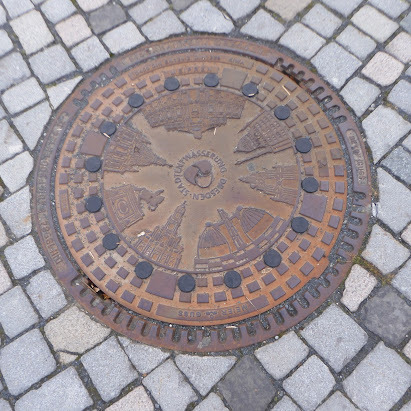 And finally, Kutná Hora.
And finally, Kutná Hora. Think artists submit their renderings and the city picks their favorite?
Think artists submit their renderings and the city picks their favorite?
October 28, 2025
Pilsen, home of Pilsner beer and more houses of worship - Czech Blog post #10
Sunday, September 28, we tookthe approximately 90-minute drive to the city of Pilsen, home of Pilsner beer.As I already mentioned on Sunday, the term Pilsner comes from, literally, “fromPilsen”, kind of like someone from America is called an American.

The city of Pilsen was foundedby He was born in 1271, but his fatherdied when he was only seven, so two other guys ruled during his youngeryears. They were not nice, and Wenceslas had to fight to rightfully serve asking. He finally was able to take over in 1296, but died of tuberculosis at theage of 33 in 1305. He was also king of Poland from 1296 to 1305, as well asHungary. During his short reign, he built a great empire stretching from theBaltic Sea to the Danube River, as well as having several wives and manychildren.

This King Wenceslas II isnot be confused with Good King Wenceslas, or Wenceslas the first, who was bornin 907, and killed by his brother in 935 or 929. He is the patron saint of theCzech Republic and his feast day is September 28, which was the day we visited.
I thought there would besome sort of celebration going on in town, but basically, because it was anational holiday, most places were closed. Only small businesses are allowed toremain open. There had been some sort of goings-on in the town square but itwas already shut down by the time we got there.
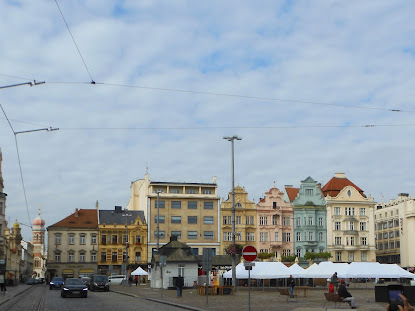
Anyway, we still saw a lotof things, most of which I don’t have a name for anymore. I should video theentire tour, right? So I can keep track of everything the tour guide says.
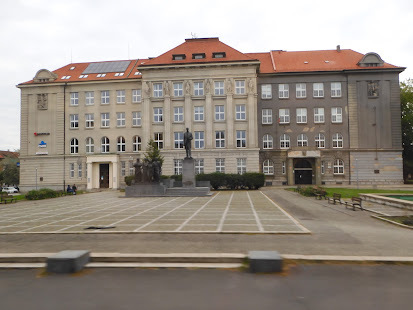
I did keep track of a fewthings.
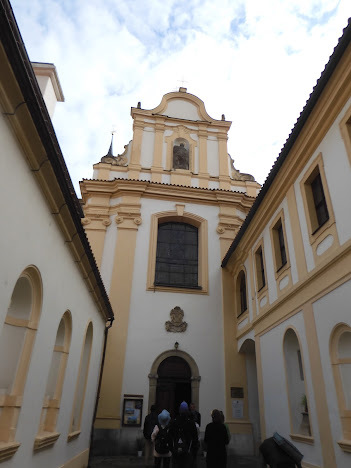
This is the Church of theAssumption of the Blessed Virgin Mary.
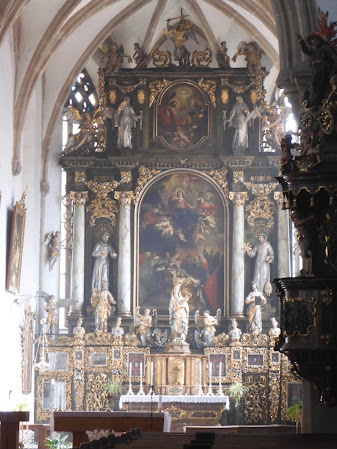
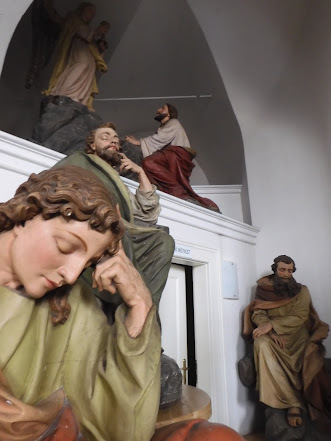
It is part of the Franciscanmonastery, which was established in the early 1300s and contains some of theoldest buildings in Pilsen.

The gothic St. BartholomewCathedral, also built in the 1300s, is huge by comparison and boasts thetallest church tower in the Czech Republic.
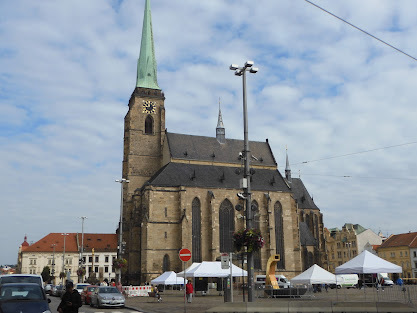
It was also beautifulinside, but somewhat overwhelming.
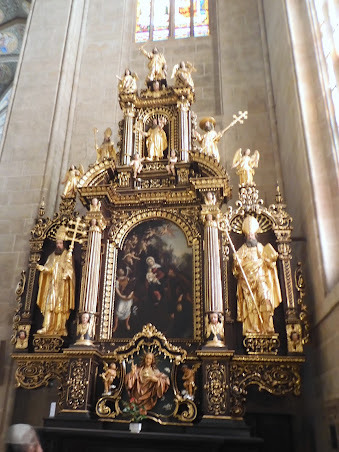

Just a few blocks away is Europe'ssecond largest synagogue, the world's fourth largest synagogue.

The Great Synagogue, withits onion domes atop two high towers, was built in the Moorish-Romanesque stylein 1893.

During World War II, itwas used for storage by the Nazis. When the few surviving area Jews returnedafter the war, they struggled to maintain the building and it fell into disrepair duringthe years of communism in what was then Czechoslovakia.
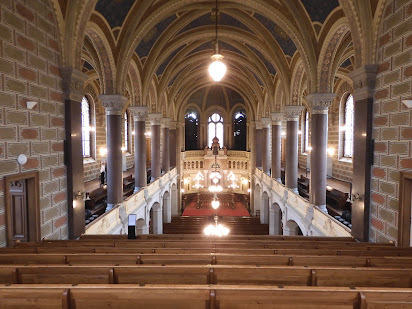
In the last 1990s, it wasrestored to its former beauty, but with a population of only 200 Jews in thecity, only the small winter room is now used for worship.
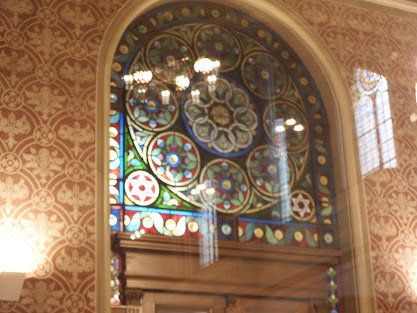
Last religious house wevisited that day was the Church of St. John of Nepomuk.
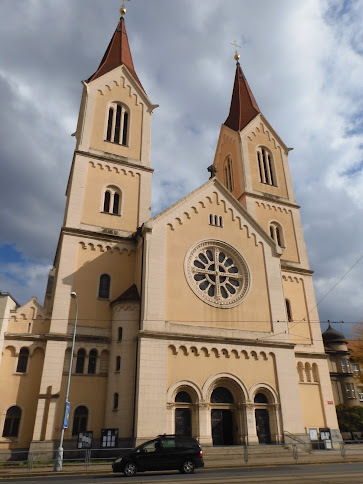
It was built between 1909and 1911, and I could tell you more about it, but aren’t you churched out? Andjust because I was there on a Sunday, doesn’t mean I need to ramble on aboutall the churches we saw.
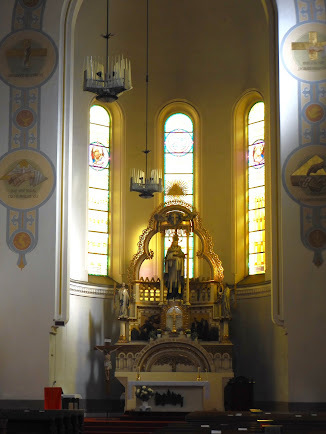 Though the summer flowers were dying, I still tried to get a picture of some in each city.
Though the summer flowers were dying, I still tried to get a picture of some in each city.
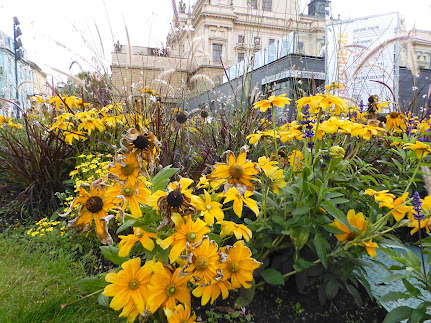
October 25, 2025
Luck
Trust in the Lord with all your heart; donot depend on your own understanding. Seek his will in all you do, and he willshow you which path to take. (Proverbs 3:5-6, New Living Translation)
Oneof the days we were in the Czech Republic, we visited the city of Pilsen, thehome of Pilsner beer (because the word “pilsner” means “from Pilsen”, I guess).

Outside of the huge St. Bartholomew Cathedral, there was a gate with a line of scary-looking angels’ heads on it. There is a legend that one particular head grants good luck and happiness if you rub it. One website I found says, “The legend concerns an executioner who was not permitted to come into the church because his job involved killing people. So, he had a substitute man take his wedding vows there in 1739. While this substitute was at the altar with the bride, the executioner was praying at that gate. When he suddenly became faint, he grabbed a cherub with one hand so he would not fall.”
So, many of the people in our tour group rubbed that one certain head. Me? No. I didn't even get a picture of it.
 And we know that God causes everything to work together for the good of those who love God and are called according to his purpose for them. (Romans 8:28, New Living Translation)
And we know that God causes everything to work together for the good of those who love God and are called according to his purpose for them. (Romans 8:28, New Living Translation)One day, many months ago, I was talking to our pastor about a business trip he was about to take. As I turned to leave his office, I said, “Good luck on your trip.”
Then I caught myself. “It’s not a Christian-thing to wish people good luck, is it?”
He answered, no, with an explanation that if someone has faith in God, they don’t wish for good luck. They only need pray. Their prayer might not be answered the way they would like, but it will be answered in the way God knows is best.
It’s all about faith and not about luck at all.
(Oh, and that little cherub head that's supposed to grant good luck? Because so many people rub it which wears it down, it has to be replaced every couple of years.)




